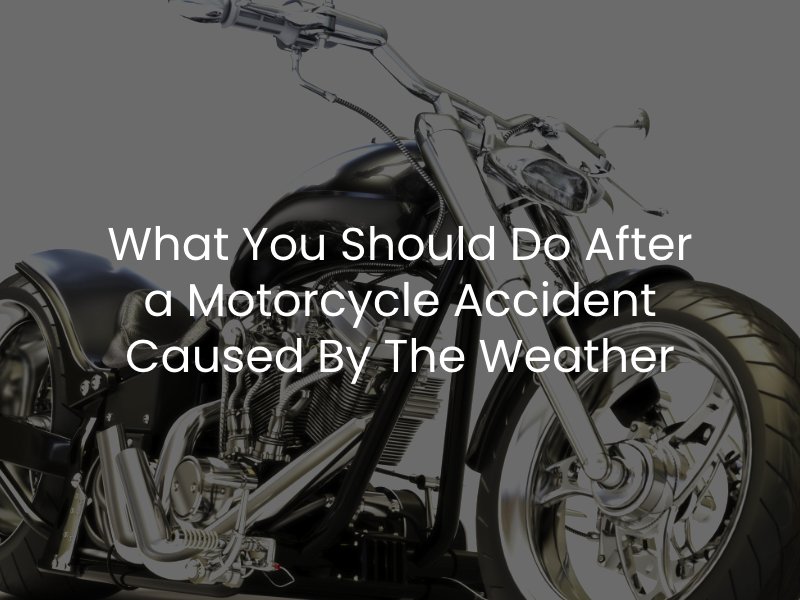Can the California Weather Conditions Affect Liability in a Motorcycle Accident Case?
California is a vast state with many different types of roadways, weather patterns, and writing conditions. The weather on the San Diego coast can affect drivers much differently than the weather during a cold Sierra Nevada day. Here, we want to discuss whether or not specific weather conditions could affect liability for a motorcycle accident in California.
How Weather Conditions Affect Motorcyclists
Motorcycles are inherently more vulnerable to adverse weather conditions than other vehicles. Rain, fog, wind, and even heat can significantly impact a motorcyclist’s ability to maintain control:
- Rain and wet roads. Rain reduces traction and visibility, making it challenging for motorcyclists to control their bikes, especially when turning or braking suddenly. Oil slicks and pooling water increase the risk of hydroplaning and accidents.
- Fog. Heavy fog can severely reduce visibility, making it difficult for motorcyclists to see and be seen by other motorists. This does increase the likelihood of rear-end collisions or failing to avoid obstacles.
- Wind. Strong gusts can push motorcycles off balance, particularly on bridges or open highways, forcing riders into other lanes or even off the road.
- Heat. High Arizona temperatures can lead to dehydration and heat exhaustion, impairing the rider’s reaction time and ability to control the motorcycle.
Impact on Liability in Motorcycle Accidents
The presence of adverse weather conditions can complicate determining liability in a motorcycle accident case. California law generally requires drivers to exercise reasonable care under the circumstances. Here’s how weather conditions may affect liability:
- Comparative negligence. California follows a comparative negligence rule, meaning multiple parties can share liability. A motorcyclist could be partly responsible if they were speeding, driving aggressively, or failing to adjust to weather conditions.
- Driver negligence. Car and truck drivers must also adapt their driving to the weather. If a driver was following too closely or failed to yield because of low visibility, they might be found negligent, even in adverse weather.
- Municipal liability. If poor road maintenance or design contributed to the accident (e.g., inadequate drainage or missing warning signs), the government agency responsible for road safety could share liability.
- Manufacturer responsibility. If a mechanical defect exacerbated the impact of weather conditions on the motorcycle (e.g., faulty brakes or tires), the manufacturer might be liable.
Steps to Take After a Weather-Related Motorcycle Accident
If you are involved in a motorcycle accident under adverse weather conditions, consider these steps to help preserve the integrity of your claim and improve the chances of recovering compensation for your losses:

- Document the Scene. Take photos and gather information about the weather, road conditions, and surrounding vehicles.
- Seek medical attention. Get a medical evaluation, even if you feel fine initially. This ensures any injuries are properly documented and helps create a strong link between the incident and the injuries that occur, something insurance carriers will want to see.
- File a police report. Ensure a police report is filed, providing an official record of the incident. If the police come to the scene of the incident, you will likely be able to obtain the report within a week or so after the incident occurs.
- Consult an attorney. An experienced Sacramento motorcycle accident attorney can assess the facts of your case, analyze fault distribution, and help secure fair compensation.